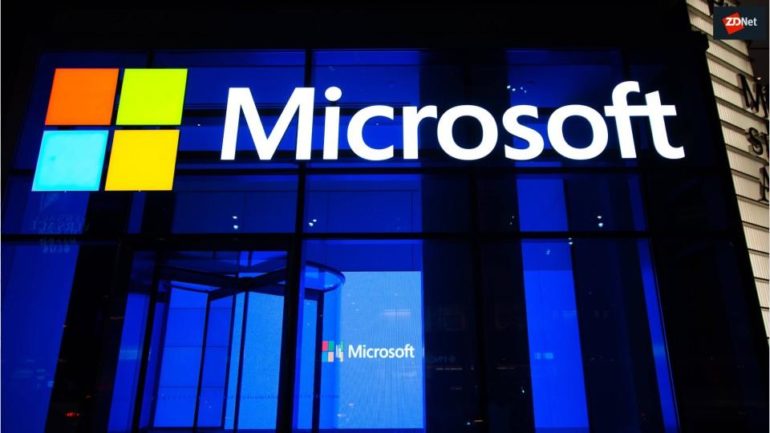Surveillance as a service?
Every time I go to the supermarket, there’s a run on toilet paper.
more Technically Incorrect
Humans seem to fear the mess that might be caused if they were to suddenly run out.
I can’t help thinking that the same thought process is being followed by the world’s corporations during this period of working from home.
Suddenly distanced from their employees, bosses are eager to keep tabs on them, desperate to avoid what they fear will be an infernally messy situation.
So in step tech companies with surveillance tools perfectly designed for the purpose.
I worry that Amazon CEO Jeff Bezos has already given surveillance a frightful image. It’s bad enough launching stores where cameras follow your every purchase and move, while eschewing the need for cashiers.
It’s worse when you read headlines such as “Amazon Reportedly Has Pinkerton Agents Surveil Workers Who Try To Form Unions.”
I worry that Microsoft is jealous, just as Amazon was of Microsoft’s latest government contract.
I worry that Microsoft worries it’s being left behind in the spying sector, which looks like a highly lucrative endeavor.
Given how many of the world’s employees have Microsoft boiled into them on a 365-day basis, this could be something of a problem. For the employees, that is.
Your Days Are Numbered.
My colleagues have already recorded how Microsoft’s new Productivity Score feature, in which management could view and record individual employees’ online actions, incited some to weep about Microsoft’s apparent enthusiasm for abject employee surveillance.
After public ululation, the company changed the parameters, said the data would be anonymized and insisted that the feature was never, no never intended to record individual employees’ behavior. Well, I never.
Still, I’m more worried about the company’s justification for such a painful notion. In hailing its Productivity Score, Redmond claimed it “illuminates the essential insights to move your transformation from art to science.”
Ah. Oh.
Anyone remember Frederick Taylor and his theory of scientific management? Even Lenin was fascinated by it.
So here we are again. No more art of management. Art is so peskily ephemeral. Instead, management is all about data points pointing to your — or your group’s — alleged productivity on Microsoft software, not any other. It’s all about quantifying your contribution on a daily basis. On Microsoft software, not any other.
If this is scientific transformation, I fear employees will never contribute to a deus ex machina. They’re mere cogs in machina.
To think someone once told me business is all about relationships.
It’s as if Microsoft has learned so little since the time it removed its more robotic leaders, in favor of ones who come across as at least having more rounded human faculties.
You’ll Be Scored For Life.
By its very nature, business isn’t predictable. Yet productivity scores truly suggest you can put an instant, dependable value on the work of every human being.
That’s the problem so many technologists still have. They’re desperate to encapsulate the human experience through the prism of cold-hearted systems.
Perhaps, you might think, I’m picking on Microsoft. Perish the notion. Of course it’s not alone in this numb(er)ing enterprise.
Yet as well as backtracking a little on its exciting Productivity Scores, Redmond also had the misfortune of having one of its patents revealed last week. This is called the “Meeting insight computing system.”
This marvelous system would tabulate people’s (alleged) moods, facial expressions and body language, as well as room temperature, to make judgments about the “quality” of meetings. And it would all be, oh, scored.
Because once you can score the “quality” of a meeting you have data that can explain, well, when to have a meeting, how to have a meeting and whether you should have a meeting at all.
It’s not enough, you see, to schedule an urgent meeting. You need a computer system to tell you whether the atmospheric conditions — as well as employees’ body language — are right for the meeting to take place.
It’s like having a permanent Feng Shui/psychic guide, there to make your business run perfectly. Scientifically, even.
The temptation to score everything allows you to believe you’ll have a sure number giving you a sure picture.
And there I was thinking that wisdom was characterized by doubt, just as ignorance is characterized by certainty.
Your Sentence Will Not Be Commuted.
I should, in passing, mention Microsoft’s new Virtual Commute, as I fear it may reflect a pattern. Part of Microsoft Teams, this purported to be a way to help remote employees switch on and switch off their ever-elongated work days.
Yet this system — still a work in progress — wanted those employees to offer it their inner thoughts on their “way” to work and on their “way” home from work.
Now where might this inner monologue be logged? Could it be in the bowels of their bosses’ IT systems? And might these thoughts end up being scored, too?
Please also let me ask this question: Is there really enough evidence that all this scoring and defining actually makes companies more money? Or does it merely give executives the feeling that they have knowledge?
There’s something bracingly peculiar when, at a time the whole world begs for empathy to be our guiding light, corporations steer managements toward chillingly intrusive and calculating ways of understanding, appreciating and relating to employees.
Worse, surely, is the notion that such scores won’t ultimately be supervised by human managers, but by AI bots. They’re cheaper, after all.
Perhaps Microsoft and others would be better served — as would their customers — if their companies developed finer ways to foster the art of business. Now there’s a disturbing idea.
Still, I asked a scientist what she thought of this new, supposedly scientific approach to management.
My wife’s response was printable — at least in some places — and comprised seven letters and one space.



